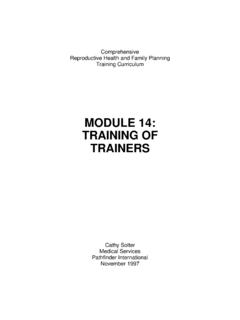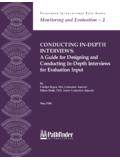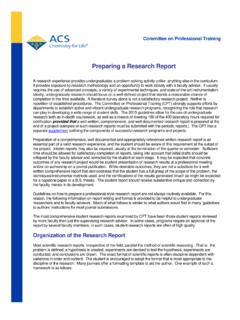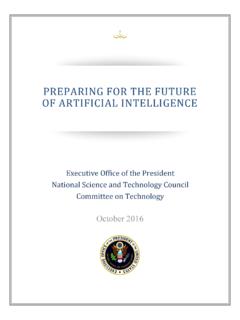Transcription of PREPARING A CASE STUDY: A Guide for Designing and ...
1 PATHFINDERINTERNATIONALTOOLSERIESM onitoring and Evaluation 1 PREPARING A CASE STUDY: A Guide for Designing andConducting a Case Study forEvaluation InputByPalena Neale, PhD, Senior Evaluation AssociateShyam Thapa, PhD, Senior Monitoring and Evaluation AdvisorCarolyn Boyce, MA, Evaluation AssociateMay 2006 PATHFINDERINTERNATIONALTOOLSERIESM onitoring and Evaluation 1 PREPARING A CASE STUDY: A Guide for Designing andConducting a Case Study forEvaluation InputByPalena Neale, PhD, Senior Evaluation AssociateShyam Thapa, PhD, Senior Monitoring and Evaluation AdvisorCarolyn Boyce, MA, Evaluation AssociateMay 2006 AcknowledgementsThe authors would like to thank the following Pathfinder employees and partners for theirtechnical inputs into this document: Emmanuel Boadi (Pathfinder/Ghana), Anne Palmer(Futures Group International), Ugo Daniels (African Youth Alliance (AYA)), VeroniqueDupont (Pathfinder/Extending Service Delivery (ESD)), Cathy Solter, Lauren Dunnington,and Shannon Pryor (Pathfinder headquarters).
2 Jenny Wilder and Mary Burket are alsothanked for their inputs and assistance in editing and producing this : WRITING ACASESTUDYWhat is a Case Study?A case study is a story about something unique, special, or interesting stories can beabout individuals, organizations, processes, programs, neighborhoods, institutions, andeven case study gives the story behind the result by capturing what happenedto bring it about, and can be a good opportunity to highlight a project s success, or tobring attention to a particular challenge or difficulty in a project. Cases2might be selectedbecause they are highly effective, not effective, representative, typical, or of special few examples of case study topics are provided below the case studies would describewhat happened when, to whom, and with what consequences in each case.
3 PATHFINDERINTERNATIONAL: WRITING ACASESTUDY3 Case Study ExamplesUniqueness/Point of InterestShifting Attitudes of Youth-Serving Your program was able to change service providers attitudes towards Service Providersdealing with Adolescent Sexual and Reproductive Health (ASRH) needs inan environment where provider s attitudes have been a barrier to youngpeople accessing SRH services. Integrating Youth-Friendly Services (YFS) Your program was effective in introducing YFS to the MOH and in in the Ministry of Health (MOH)institutionalizing an YFS curriculum in a setting where the MOH did notprovide YFS. Integrating HIV Prevention in Faith-Based Your program was able to integrate HIV prevention in several Organization (FBO) Health Services Delivery FBO service delivery points in an environment that normally does notinclude or welcome HIV prevention Youth Leadership in TanzaniaYour program built the leadership capacity of youth to advocate, promote,and participate in decision making around ASRH.
4 This transpired in asetting that did not include ASRH on the agenda nor encourage youthparticipation in general or in decision making in particular. 1 Yin, Robert K. (2003). Case Study research : Design and Oakds: Sage refers to the unit of analysis or topic chosen for study ( , the individual, organization, or program).When is a Case Study Appropriate?Case studies are appropriate when there is a unique or interesting story to be told. Casestudies are often used to provide context to other data (such as outcome data), offering amore complete picture of what happened in the program and are the Advantages and Limitations of a Case Study?The primary advantage of a case study is that it provides much more detailed informationthan what is available through other methods, such as surveys.
5 Case studies also allow oneto present data collected from multiple methods ( , surveys, interviews, documentreview, andobservation) to provide the complete story. There are a few limitations andpitfalls however, each of which is described be lengthy:Because they provide detailed information about the case in narrative form,it may be difficult to hold a reader s interest if too lengthy. In writing the case study, careshould be taken to provide the rich information in a digestible that case studies lack rigor:Case studies have been viewed in the evaluation andresearch fields as less rigorous than surveys or other methods. Reasons for this include thefact that qualitative research in general is still considered unscientific by some and in manycases, case study researchers have not been systematic in their data collection or haveallowed bias in their findings.
6 In conducting and writing case studies, all involved shoulduse care in being systematic in their data collection and take steps to ensure validity3andreliability4in the generalizable:A common complaint about case studies is that it is difficult to generalizefrom one case to another. But case studies have also been prone to overgeneralization,which comes from selecting a few examples and assuming without evidence that they aretypical or representative of the population. Yin, a prominent researcher, advises case studyanalysts to generalize findings to theories, as a scientist generalizes from experimentalresults to : WRITING ACASESTUDY3 Validity refers to the degree to which a study accurately reflects or assesses the specific concept that the researcher is attempting to is the extent to which an experiment, test, or any measuring procedure yields the same result on repeated , Robert K.
7 (2003). Case Study research : Design and Oaks: Sage is the Process for Conducting a Case Study?The process for conducting case study research follows the same general process as isfollowed for other research : plan, collect data, analyze data, and disseminate findings. Moredetailed steps are given Plan Identify stakeholders who will be involved. Brainstorm a case study topic, considering types of cases and why they are unique or of interest. Identify what information is needed and from whom (see What are PotentialSources of Information? and What are the Elements of a Case Study? ). Identify any documents needed for review. List stakeholders to be interviewed or surveyed (national, facility, and beneficiarylevels) and determine sample if necessary. Ensure research will follow international and national ethical research standards,including review by ethical research committees.
8 For more information, please seethe International Ethical Guidelines for Biomedical research Involving HumanSubjects, available at Develop Instruments Develop interview/survey protocols the rules that Guide the administration andimplementation of the interview/survey. Put simply, these are the instructions that are followed to ensure consistency across interviews/surveys, and thus increase thereliability of the findings. The following instructions for the should be included in the protocol: What to say to interviewees when setting up the interview/survey; What to say to interviewees when beginning the interview/survey, includingensuring informed consent of the respondent (see Appendix 1 for an example); What to say to respondent in concluding the interview; What to do during the interview (Example: Take notes?)
9 Audiotape? Both?); and What to do following the interview (Example: Fill in notes? Check audiotape forclarity? Summarize key information for each? Submit written findings?). Develop an interview Guide /survey that lists the questions or issues to be explored andincludes an informed consent form. Please note that you will likely need interviewguides/surveys for each group of stakeholders, as questions may differ. Where necessary, translate guides into local languages and test : WRITING ACASESTUDY53. Train Data Collectors Identify and train data collectors (if necessary). (See Training Tips for DataCollectors 6.) Where necessary, use interviewers that speak the local Collect Data Gather all relevant documents. Set up interviews/surveys with stakeholders (be sure to explain the purpose, why thestakeholder has been chosen, and the expected duration).
10 Seek informed consent of each respondent (written or documented oral). Re-explainpurpose of interview, why the stakeholder has been chosen, expected duration of,whether and how the information will be kept confidential, and the use of a notetaker/tape recorder. If the respondent has consented, conduct the Analyze Data Review all relevant documents. Review all interview/survey Disseminate Findings Write report (see What are the Elements of a Case Study? ). Solicit feedback. Revise DisseminateTraining Tips for Data CollectorsStaff, youth program participants, or professional interviewers may be involved in datacollection. Regardless of what experience data collectors have, training should include: An introduction to the evaluation objectives, A review of data collection techniques, A thorough review of the data collection items and instruments, Practice in the use of the instruments, Skill-building exercises on interviewing and interpersonal communication, and Discussion of ethical : WRITING ACASESTUDY6 Adamchak, S.











